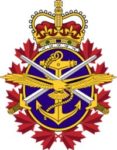 Ted Campbell looks at one of the legacies of the 1968 integration of the Canadian Army, Royal Canadian Navy, and Royal Canadian Airforce as the unified Canadian Armed Forces:
Ted Campbell looks at one of the legacies of the 1968 integration of the Canadian Army, Royal Canadian Navy, and Royal Canadian Airforce as the unified Canadian Armed Forces:
Our problem, in Canada, goes back to a fairly simple mistake that former Defence Minister Paul Hellyer and his minions made in the mid 1960s. First I must declare that a lot of what Mr Hellyer proposed was good ~ the unification of the armed forces, creating proper joint commands in which Navy, Army and Air Force units and formations served together, under one single commander, just as history taught they they would fight together in war, made excellent sense. Some of what he introduced ~ like the integration of the military into a single service and introducing common occupation and training systems ~ made less, little or no sense at all.
The logical trap into which Mr Hellyer and his team fell and the consequential problem which still infects the Canadian Armed Forces today is that they failed to grasp that similar ≠ identical. Consider, for example, a Navy helicopter pilot and an Army attack helicopter pilot ~ both must fly rotary wing aircraft at a basic level, in that they are almost certainly identical, but, after that, the differences between landing a very big helicopter on the heaving deck of a very small warship and flying a small helicopter at high speeds at near treetop level are very large and the two pilots are very, very dissimilar. Does it make sense to train them together at the primary flying school level? Yes! Does it make sense to mix them together into one pool of “pilots” on the grounds that they are very much the same? No! The same applies to cooks and radar technicians and pay clerks and, and, and … they are, very often, similar but rarely nearly enough identical to merit having them in a single “trade” or group. But, Mr Hellyer was, valiantly, trying to solve a funding crisis and savings in personnel and training were seen as the equivalent of the brass ring on the old fashioned carnival carousel. For almost fifty years Mr Hellyer’s deeply flawed notion of integration has been sacrosanct even as his very good ideas about unification were pushed aside by empire building careerists in the most senior ranks of the Canadian Forces and by lazy superiors, including disengaged ministers and bureaucrats.
We can start the fix by recognizing that some things do work: there should be, just as an example, one, single, integrated primary flying school, where all helicopter pilots learn to fly a basic rotary wing aircraft. But Navy, Army and RCAF pilots (and, yes, each service should have its own) should, then, be trained in their specific specialities by their own service specialists. Similar things should apply to many skills ~ integrate the education and training when the similarities outweigh the differences, but train, usually, in single service, specialist centres, when the differences are dominant. Some training ~ staff training, for example, to produce officers who can serve in joint HQs ~ must be integrated, however, if we ever want to have a proper unified force.
Will it cost more? Yes … superficially. But the savings for which Mr Hellyer so fervently hoped, in 1968, never really materialized; instead the training system used, as it was directed to do, minimum common standards to achieve economies and, thereby, financially “burdened” the other commands with special to function training: teaching Army cooks to drive trucks and use field (gas) stoves, for example, and teaching Navy supply people how to work in a ship. It is possible, even likely, in my opinion, that Canadian military education and training could be reformed at low cost. Some education and training can be contracted out or done, as is the case now, using a kind of public-private partnership (P3) arrangement. I will return to this later with a thought on the the Royal Military College, the Staff Colleges and so on.



